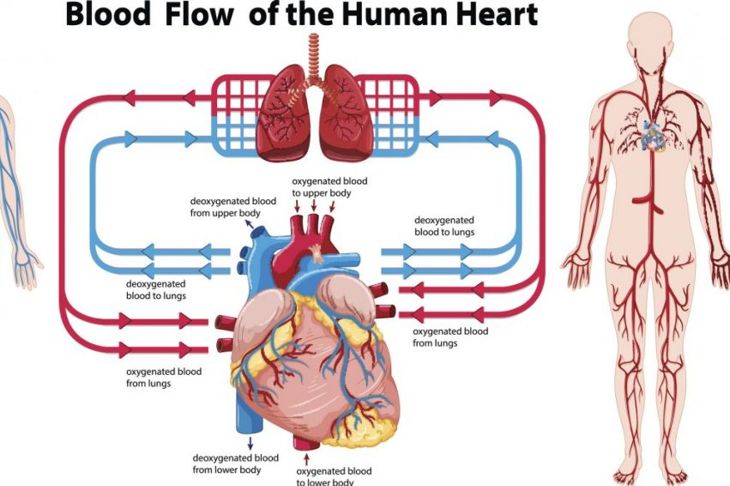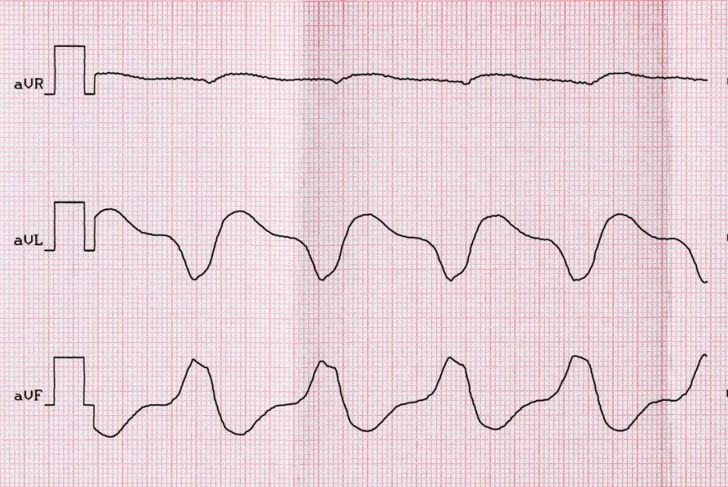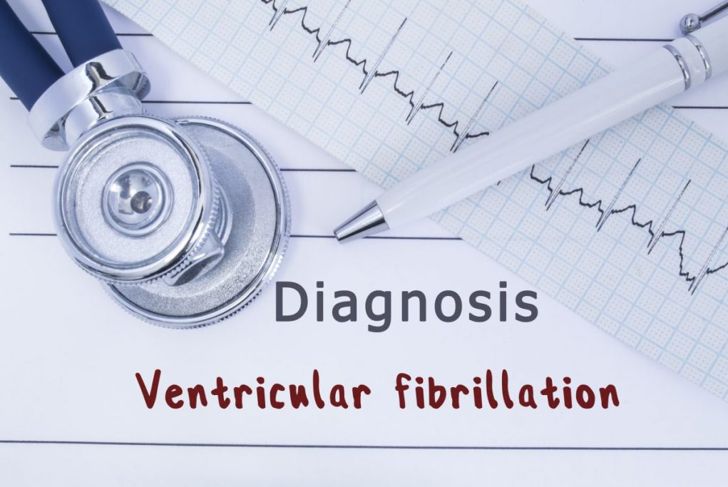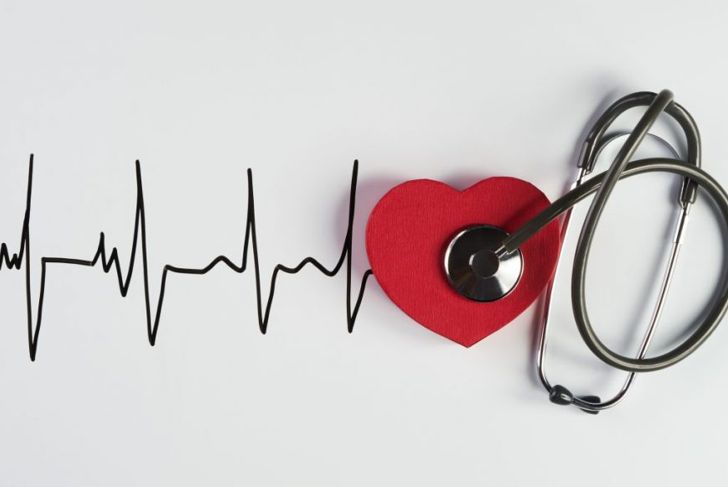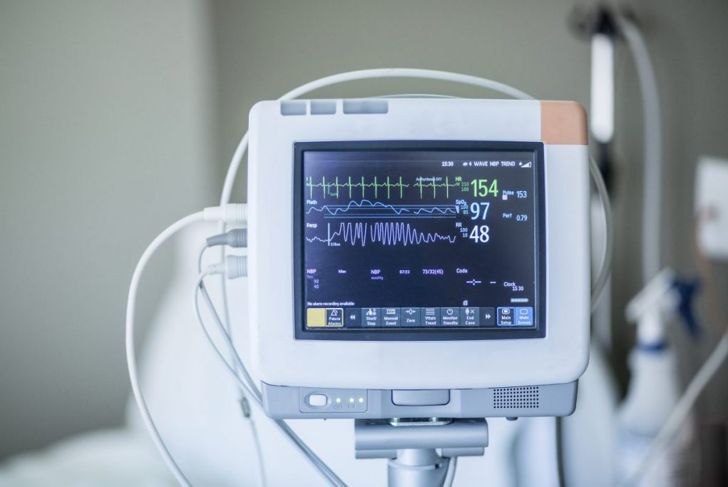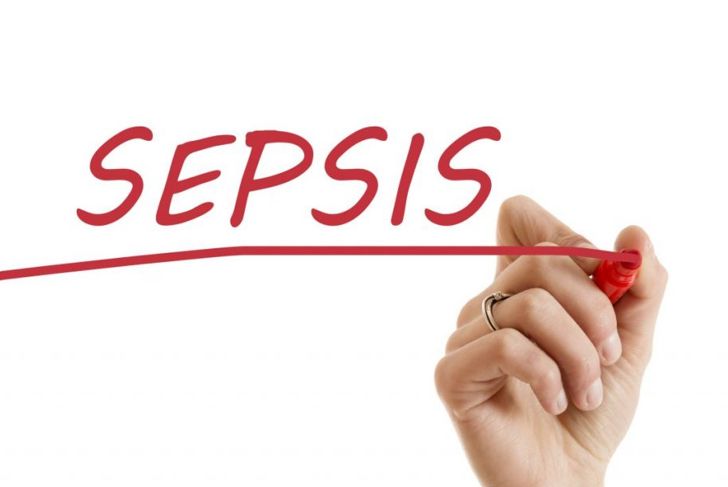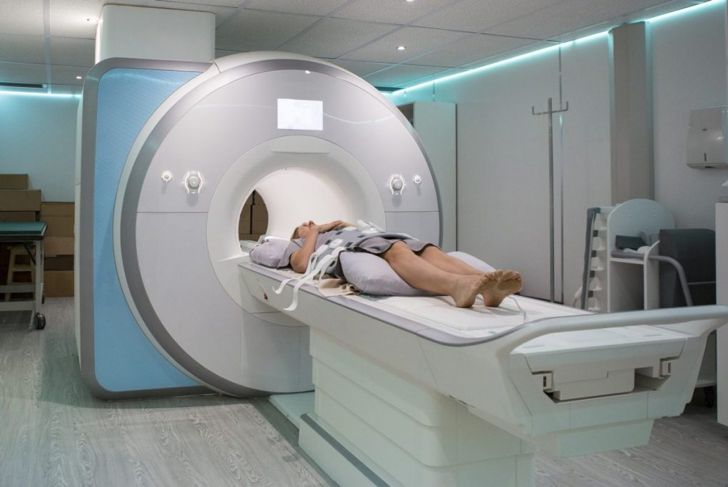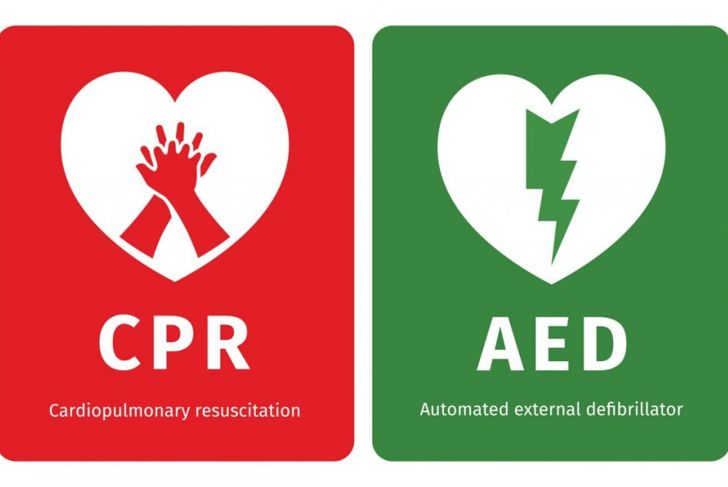Ventricular fibrillation (V-fib) is an abnormal heartbeat where the heart beats too quickly, with erratic electrical impulses. During ventricular fibrillation, the ventricles quiver instead of pumping blood to the lungs and the rest of the body. V-fib is the most common cause of sudden cardiac death and necessitates immediate medical attention.
How Does the Heart Normally Function?
The heart is made up of four chambers. The atria make up the two upper chambers while the ventricles comprise the two lower chambers. The sinus node, located in the right atrium, controls the heart’s rhythm, starting each heartbeat by producing electrical impulses that travel from the sinus node across the atria. This makes the atrial muscles contract and pump blood into the ventricles. The electrical impulse arrives at the atrioventricular (AV) node, which slows down the electrical impulse before sending it on to the ventricles. This delay gives the ventricles time to fill with blood. When the electrical impulse reaches the ventricle muscles, they contract, pumping blood to the rest of the body.
What is Ventricular Tachycardia?
V-fib usually starts with ventricular tachycardia, which occurs when the electrical impulses in the ventricles allow the heart to beat too fast. Sometimes the ventricles beat out of sync with the atria during ventricular tachycardia. When this happens, the ventricles don’t have time to fill with blood, resulting in an inadequate amount reaching the rest of the body. Ventricular tachycardia may last a few seconds or much longer, and it can result in sudden cardiac arrest. Ventricular tachycardia typically occurs in people who have other heart conditions such as structural heart disease.
What is Ventricular Fibrillation?
V-fib can result from ventricular tachycardia or single ventricular beats. During V-fib, the heart beats with rapid and erratic electrical signals, which makes the ventricles quiver rather than pumping blood to the rest of the body. Sometimes, ventricular fibrillation causes blood pressure to drop, cutting off blood supply to the major organs.
What Are the Symptoms of Ventricular Fibrillation?
Signs include dizziness, nausea, rapid heartbeat, chest pain, and shortness of breath. The most common symptom of ventricular fibrillation is a sudden collapse, loss of consciousness, or fainting because the brain and muscles aren’t receiving an adequate amount of blood. V-fib may lead to cardiac arrest.
Who is at Risk for Ventricular Fibrillation?
A previous heart attack, congenital heart disease, heart muscle disease, a previous episode of V-fib, and injuries to the heart, such as electrocution, all put someone at higher risk of V-fib. In addition, using illegal drugs such as methamphetamine or cocaine, and significant electrolyte imbalances such as magnesium or potassium abnormalities, put someone at greater risk for the condition.
How is Ventricular Fibrillation Diagnosed?
Doctors must diagnose ventricular fibrillation in an emergency situation before administering treatment. A heart monitor facilitates this diagnosis by reading electrical signals that will either show an erratic heartbeat or no heartbeat. Also, when a person is experiencing ventricular fibrillation, no pulse is present.
What Causes Ventricular Fibrillation?
Typically, some kind of heart disease is responsible for ventricular fibrillation. The most common cause of V-fib is a disturbance in the electrical signals going through the heart after someone experiences his or her first heart attack, or issues resulting from a scar in the heart muscle tissue following a previous heart attack. Other causes of V-fib include an insufficient amount of blood flowing to the heart, drug toxicity, issues with the aorta, and sepsis, a severe infection in the body.
What Tests Are Used to Determine the Cause of Ventricular Fibrillation?
An electrocardiogram can show if a previous heart attack has occurred or is in process. Blood tests can look for enzymes that leak into the bloodstream when a heart attack has occurred. Imaging tests, such as cardiac computerized tomography (CT) or cardiac magnetic resonance imaging (MRI) can show if there are any structural abnormalities present in the heart.
How is Ventricular Fibrillation Treated?
Emergency treatments for V-fib focus on restoring blood flow to the body as quickly as possible, to avoid damage to the body’s vital organs. Cardiopulmonary resuscitation (CPR) keeps blood flowing through the body by mimicking the pumping motion of the heart. An electric shock may be delivered to the heart with a defibrillator. The electric shock temporarily stops the heart, which often allows it to reset and resume its natural rhythm.
How Can Someone Prevent Ventricular Fibrillation?
A doctor may prescribe an anti-arrhythmic drug such as a beta-blocker to someone at risk for ventricular fibrillation. An internal cardioverter defibrillator (ICD) may also be beneficial. An ICD is a battery-powered device that is implanted near the left collarbone. One or more flexible wires go through the veins to the heart. The ICD constantly monitors a person’s heartbeat. If ventricular tachycardia or ventricular fibrillation occurs, the ICD sends shocks to the heart to reset its rhythm.

 Home
Home Health
Health Diet & Nutrition
Diet & Nutrition Living Well
Living Well More
More